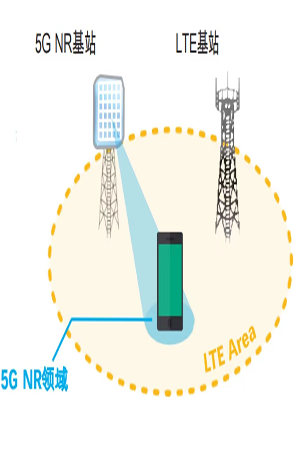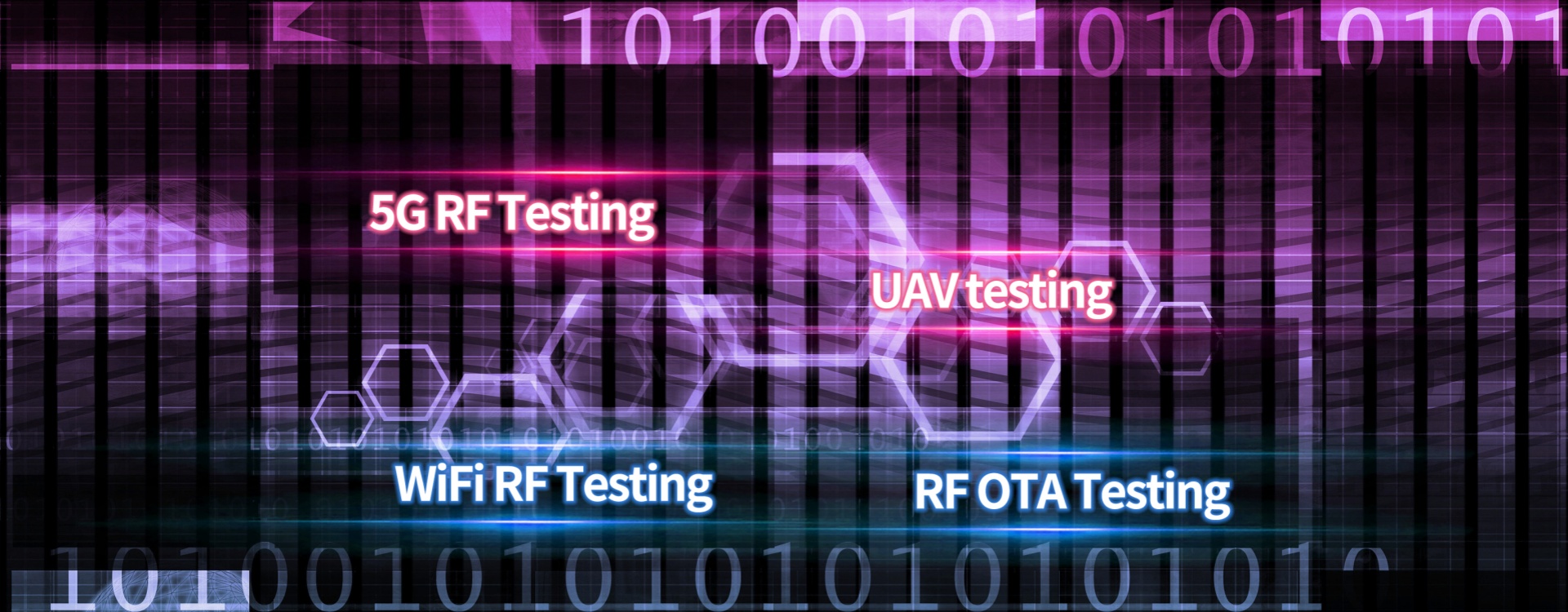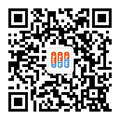RF test in NFC, what should be paid attention to in CE/FCC RF test?
The mainstream methods of mobile payment are NFC and RFID. Among them, the mode of realizing mobile payment with NFC technology is getting more and more recognition. In addition, relevant departments and enterprises in China are accelerating the study of using NFC technology to realize mobile payment, helping Chinese mobile phone users to realize their dream of mobile payment. The China Communications Standards Association 13.56MHz-based NFC technology interface and protocol have been drafted and are in the process of being submitted for approval. The Ministry of Industry and Information Technology of China and The People‘s Bank Of China will also set up a joint working group to unify the standards as soon as possible to determine the final mobile payment method.
The full name of NFC is Near Field Communication, which is short-range wireless communication. It is a wireless technology initiated by Philips and jointly promoted by famous manufacturers such as Nokia and Sony.
NFC evolved from the integration of contactless radio frequency identification (RFID) and interconnection technologies. Combining proximity reader, proximity card and peer-to-peer functionality on a single chip enables identification and data exchange with compatible devices over short distances.
This technology was originally just a simple merger of RFID technology and network technology, and now it has evolved into a short-range wireless communication technology, and the development trend is quite rapid. Many manufacturers have launched mobile phone products that support NFC technology.
Different from RFID, NFC has the characteristics of two-way connection and identification, works in the frequency range of 13.56MHz, and has a working distance of about 10 cm. NFC technology promotes standardization under the framework of ISO 18092, ECMA340 and ETSI TS 102 190, and is also compatible with the widely used ISO14443 Type-A, B and Felica standard contactless smart card infrastructure. The NFC chip is installed on the mobile phone, and the mobile phone can realize small-value electronic payment and read the information of other NFC devices or tags. The short-distance interaction of NFC greatly simplifies the entire authentication and identification process, making mutual access between electronic devices more direct, safer and clearer. Through NFC, multiple devices such as computers, digital cameras, mobile phones, and PDAs can be easily and quickly connected wirelessly, thereby realizing data exchange and services.
The following will give a detailed introduction to the CE and FCC certifications of the NFC function in mobile phones. Regarding the certification of NFC, the CE standards are ETSI EN 300 330-1 and ETSI EN 300 330-2. The FCC certification standard is FCC PART 15C.
1. RF test requirements for NFC frequency band in CE certification
The RF standards involved in CE certification are mainly EN 300 330. This standard is aimed at RF devices operating at 9KHz to 25MHz and inductive loop systems in the frequency range of 9KHz to 30MHz, that is, short-range wireless devices. The following will introduce the test items involved in EN300330. CE tests are basically described from the transmitter and receiver.
1. Transmitter part:

1) Permitted range of operating frequencies
The allowable operating frequency range is the frequency range in which the device is authorized to operate. Its range requirement is 9 kHz to 30 MHz.
Measurement settings can be made using the method shown below. If the EUT signal can have one or more modulation schemes, each modulation scheme and modulation parameter must be set and tested, and the maximum and minimum frequencies at which it works should be tested and recorded separately.
Equipment under test——Spectrum Analyzer——Data Storage
2) Limits for transmitters in the range from 9 kHz to 30 MHz
This test has two components. One is the maximum radiated field strength (H-field). Another term is the RF carrier current.
2.1 Maximum radiation field strength (H-field)
When the transmitter antenna is an integrated antenna or a dedicated antenna, its radiation intensity (H-field) in the direction of the maximum field strength is tested under specific test conditions.
Radiation intensity measurements of H-field transmitters need to be performed at an open test site. Equipment should be tested at standard distances of 10 meters under the H-field test requirements. The H-field test is performed by a receiver connected to a closed loop antenna. The measurement bandwidth and receiver detection type need to comply with the specifications in the table below.

The test limits are as follows:


Figure: Frequency envelopes of RFID and EAS devices operating at 6.78MHz and 13,56 MHz
2.2 RF carrier current
Since this test is only applicable to the third category of products. Therefore, it is not suitable for the NFC function of the mobile phone, so it is omitted.
3) Limits for the permitted range of modulation bandwidth
The allowable range of modulation bandwidth must comply with the vendor‘s specification. The frequency range of the modulation bandwidth includes the relevant sidebands for the following two cases:
1) The carrier frequency is less than 135KHz: the sideband is 23DB lower than the carrier power.
2) The carrier frequency is 135KHz to 30MHz: the sideband is 15DB lower than the carrier power.
Since the operating frequency of NFC is 13.56MHz, its sideband selection needs to be done in the second way.
During testing, unless the equipment has a fixed antenna necessary to form a whole, a dummy antenna shall be used to simulate its antenna. The RF output of this device should be connected to a spectrum analyzer through a 50Ω variable attenuator. (The function of the attenuator is to prevent the spectrum analyzer from being damaged due to excessive signal power. Since the NFC power is very low, the attenuator can also be connected for protection.) The transmitter should work under normal power or field strength in the test state. And should be tested under normal and extreme conditions separately.
Since the NFC operating frequency is 13.56MHz, its modulation bandwidth limit is 13,553MHz to 13,567MHz, or ±7.5% of its carrier frequency, ie, 12.543MHz to 14.577MHz. Whichever is smaller, so the allowable modulation bandwidth limit for NFC is 13,553MHz to 13,567MHz.
4) Transmitter spurious and out-of-band emissions
The test is divided into two methods, one is the conduction test method and the other is the space radiation test method. The conduction test method is only applicable to Class III products. Therefore, it is not suitable for the NFC function test of mobile phones, while the space radiation method is suitable for any type of product. The magnetic field strength test of space radiation needs to be carried out in an open field of 10 meters. The test is performed using a standard closed magnetic field antenna.
The test limits are shown in the table below:

5) Effective radiated power
The effective radiated power test applies to all product categories. The test frequency range is 30MHz-1GHz. The test is carried out in a full anechoic chamber. The sample is rotated 360° to find its maximum power value and recorded. The test environment is shown in the following figure:

The test limits are as follows:

2. Receiver part
1)Adjacent channel selectivity - in band
This test is only applicable if the receiver is a safety short-range transmission device ie the failure of the system may result in a physical risk to the individual. NFC is a short-distance transmission device with a transmission function, which means that when a running program is abnormal, its function is lost, but it will not pose a security risk.
2)Blocking or desensitization
This test applies to short-range transmission equipment for security and communication functions, but this requirement does not apply to tagging systems (eg RFID, anti-theft, access control, positioning systems). The NFC function belongs to the radio frequency identification system. So this test is also not applicable.
3)Receiver spurious emissions
Spurs are disturbances radiated from antennas, enclosures and receivers. This test does not apply when the receiver is connected to a transmitter that is permanently transmitting within 3 meters. Because if so then the test will be carried out with the transmitter in working condition, and this situation has already been tested before, ie the transmitter‘s spurs have already been tested, so there is no need to repeat the test.
The spurious test of the receiver can be divided into two cases according to the frequency below 30MHz and above 30MHz.
Test Limits:
The test value below 30MHz shall not exceed the H-field value in the table below at a test distance of 10m.

The limits above 30MHz are shown in the table below:

The above is the test content involved in the EU certification for handheld mobile devices with NFC function.
2. RF test requirements for NFC frequency bands in FCC certification
The test standard involved in the FCC certification of NFC is 15C in 47 CFR Part 15, that is, the specification requirements for intentional radiators.
The test items are as follows:

1. Conducted Emission
Test Limits:

Note 1. In the frequency range of 0.15MHz~0.5MHz, the limit decreases linearly with the logarithm of the frequency.
2. If the value measured by the quasi-peak detector is not greater than the limit specified by the average value measurement, it is considered that the measurement by the average value detector can also meet the requirements of the limit value.
The test setup is shown below:

2. Radiated Emission
Radiated disturbance can be divided into the following frequency ranges:
1) Test with test frequency <30MHz (9KHz-30MHz, H-field). Tested in accordance with FCC Section 15.225, the test process requires the EUT to be in a maximum emission state. The test distance is 10 meters, using a closed loop
antenna 1 meter from the ground to receive, and the test bandwidth is set to 10KHz.
2) Test frequency > 30MHz (30MHz-1GHz, E-field).
Test Limits:

The test setup is shown below:

3. Frequency Tolerance
According to the requirements of FCC Section 15.225, the permissible operating frequency range of the device under test is 13.553MHz~13.567MHz, and the permissible fluctuation range of the download wave frequency under the test conditions of -20 °C to +50 °C ambient temperature is 0.01%. If the equipment does not declare its limit working voltage, then its limit working voltage shall be 85% and 115% of its normal working voltage.
The test setup is shown below:

4. 20dB Bandwidth
According to the requirements of FCC Section 15.215, it is necessary to measure the 20dB bandwidth of the equipment, and this bandwidth must be within the frequency range specified in the regulations.
The test setup is shown below:

The above are the radio frequency test requirements involved in the NFC system in CE and FCC certification. Welcome to consult Deeplight for any questions about this test.
Recommended items
-

30GHz-300GHz millimeter wave RF/OTA/PD test
Millimeter wave (mmwave) refers to electromagnetic waves with wavelengths between super high frequency (SHF) and high frequency (EHF). The wavelength range of millimeter waves is approximately between 1 and 10 millimeters, and the corresponding frequency range is 30 to 300 GHz. Mainly used in weather radar, space communication, radio astronomy and so on. This article will focus on the ...View more -

5G NR RF and protocol testing services
5G NR is a global 5G standard based on the new air port design of OFDM, and is also the foundation of the next generation of very important cellular mobile technology. Radio frequency testing refers to the testing of high-frequency AC changes in electromagnetic waves. Signaling testing refers to simulating the call connection of a real network and completing signal connection through m...View more -

5G mobile phone security and SAR testing
5G mobile phone security and SAR testingView more -

RF test in NFC, what should be paid attention to in CE/FCC RF test?
RF test in NFC, what should be paid attention to in CE/FCC RF test? The mainstream methods of mobile payment are NFC and RFID. The model of implementing mobile payment using NFC technology is gaining more and more recognition. Moreover, relevant departments and enterprises in China are accelerating research on utilizing NFC technology to achieve mobile payment, helping...View more




